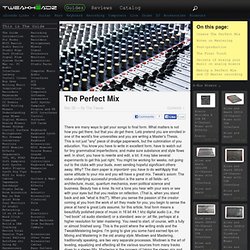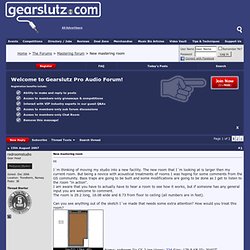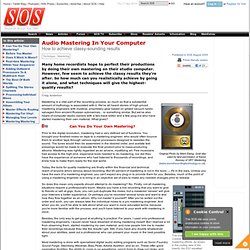

The Perfect Mix: with notes on Mastering Audio. There are many ways to get your songs to final form.

What matters is not how you get there, but that you do get there. Lets pretend you are enrolled in one of the world's fine universities and you are writing a Master's Thesis. This is not just "any" piece of drudge paperwork, but the culmination of you education. You know you have to write in excellent form, have to watch out for tiny grammatical imperfections, and make sure substance and style flows well. In short, you have to rewrite and edit, a lot. Every mix is different. Step one is always to calibrate the mixer however you can.
Note: If you don't have meters on every channel then you have to use the main meters on the mixer for this. Match the following instruments when soloed in place to the db markers on your mixing desk or your mixdown deck or software. Kick drum 0db Eq to taste. Tip: If using a live drummer, you need to stop the kick drum from resonating too much.
Snare -2 db eq to taste in the frequencies above 4khz. Home of Eclectica Studios -Austin Tx, Eclectica Recordings, Austin Studio Tech Services and Producer/Arranger - Mixing & Mastering engineer Tim Dolbear, 512-219-0100. New mastering room. Hello Jay!

Thanks for the corrections! >Also, your post suggests, whether intended or not, that the smaller commercial diffusors need less distance since they are less deep, but this is not quite true. It is not three times the depth of the diffusor that is needed, rather three times the wavelength of the lowest frequency that is effectively diffused. This can be calculated by dividing the speed of sound by the frequency. Sorry. The point is still the same: there are designs that works in the closer field and designs that needs more than 10.5 feet. So what I'm trying to say is that "a distance three times the wavelength of the lowest frequency" is a better starting point than "10.5 feet".
>For custom designs, you need to do the math. Agreed! >The speed does in fact change with factors such as elevation, temperature, and humidity, so to be completely accurate, you would want to take into account the average temperature and humidity of your room, plus the elevation of the studio. Andreas. Audio CD Mastering, Mixing & Replication. Audio Mastering In Your Computer. Many home recordists hope to perfect their productions by doing their own mastering on their studio computer.

However, few seem to achieve the classy results they're after. So how much can you realistically achieve by going it alone, and what techniques will give the highest-quality results? Craig Anderton Mastering is a vital part of the recording process, so much so that a substantial amount of mythology is associated with it.
We've all heard stories of high-priced mastering engineers with mystical, proprietary gear based on gilded vacuum tubes salvaged from ancient Russian submarines... or something similar. Can You Do Your Own Mastering? Prior to the digital revolution, mastering had a very defined set of functions. Today, the tools for quality mastering are finally within the financial and technical reach of anyone who's serious about recording. So does this mean only experts should attempt to do mastering? Besides, the only way to get good at anything is practice.